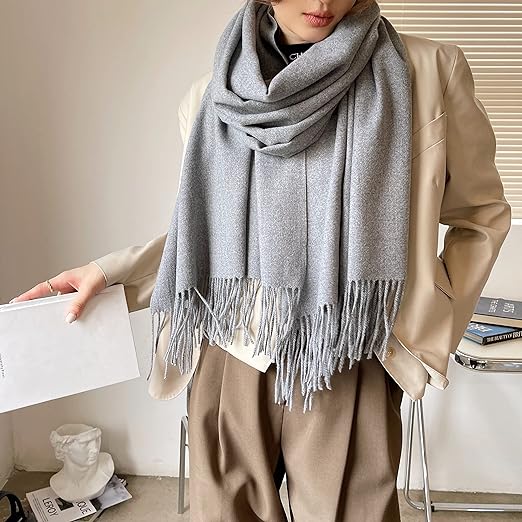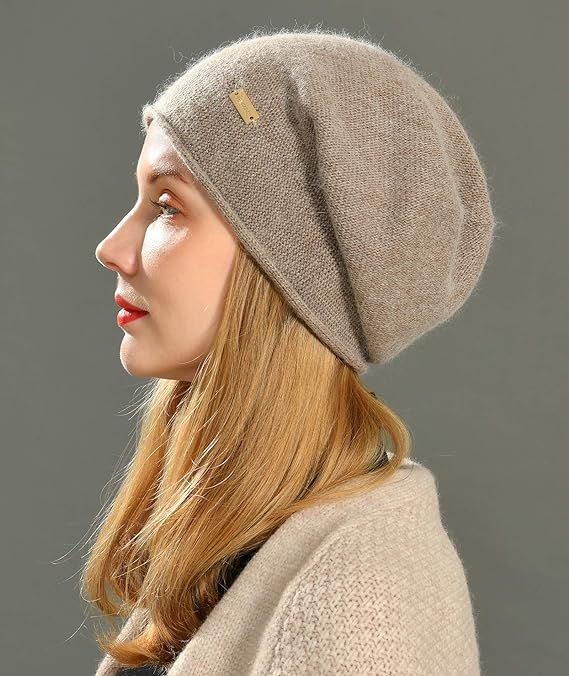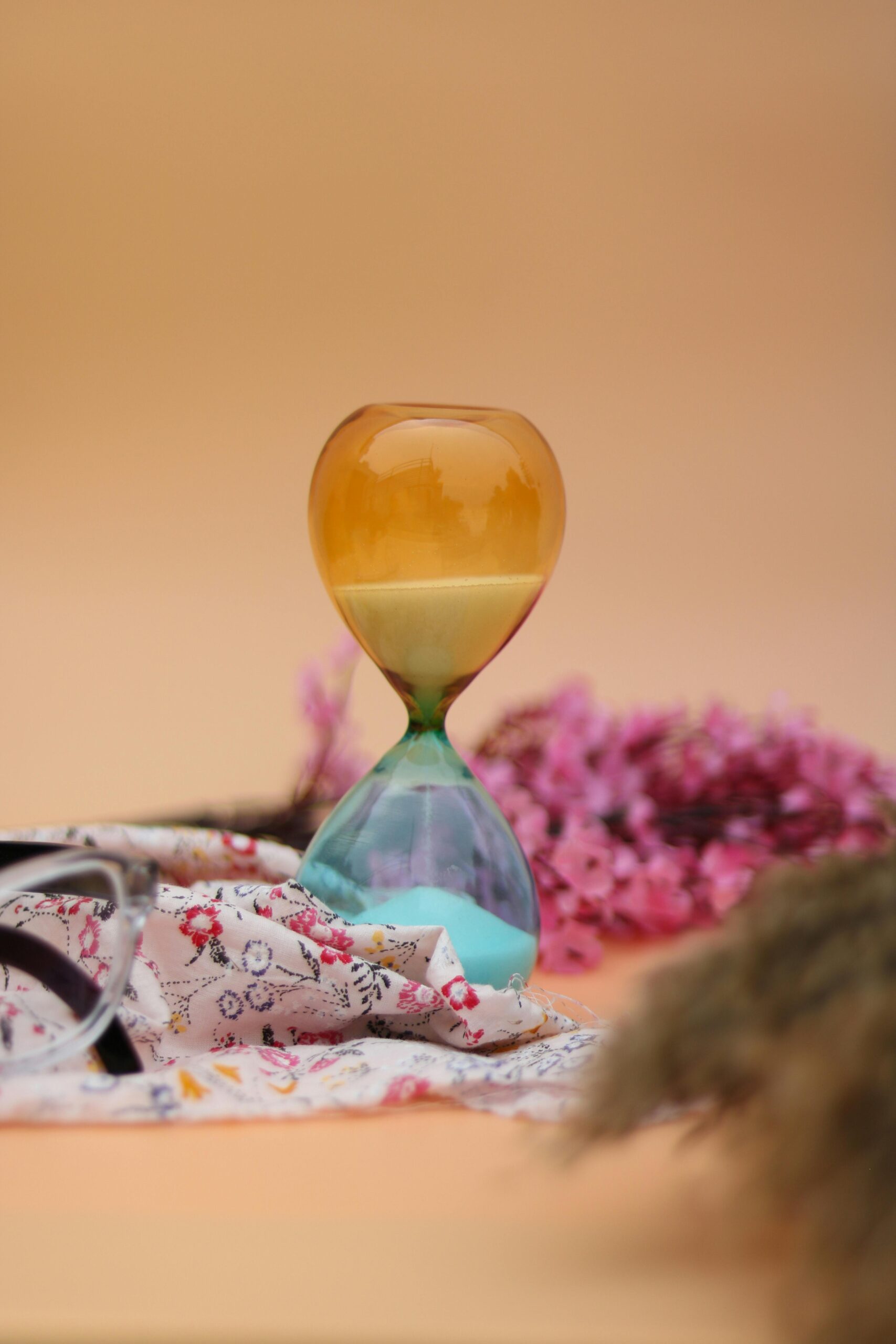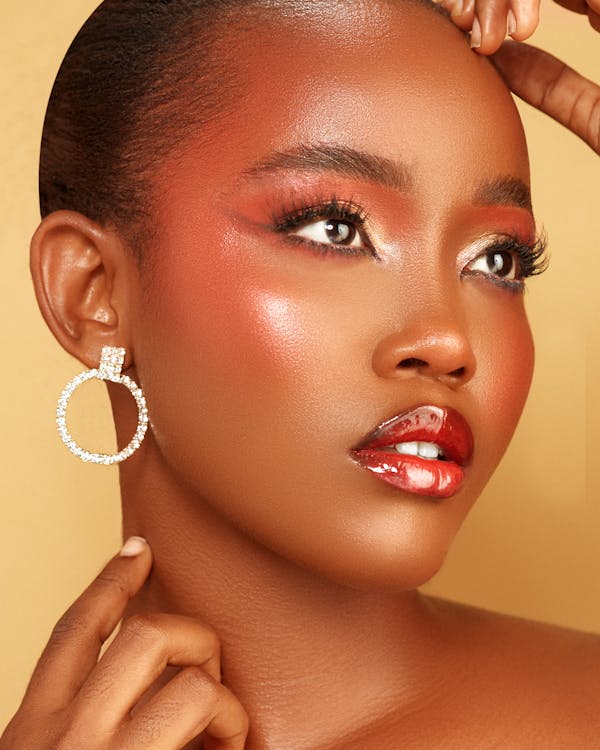Our Location
304 North Cardinal St.
Dorchester Center, MA 02124

As the days grow shorter and the temperature begins to dip, it’s easy to slip into a winter fashion rut. Who hasn’t experienced that moment of dread when reaching for a bulky coat, knowing it will hide any attempt at a stylish outfit? The struggle is real—keeping warm while maintaining a sense of personal style during the colder months can seem like a daunting task.
But here’s the good news: with a little creativity and some key wardrobe essentials, you can navigate the chill without sacrificing your flair. In this guide, we’re going to walk you through the essentials of a cold-weather wardrobe that doesn’t just keep you warm, but also turns heads. Whether you’re layering up for a brisk morning commute, bundling for a snowy evening stroll, or dressing to impress for a night out, we’ve got you covered.
Thanks for checking out this post! Don't miss out—remember to subscribe!
We’ll delve into the foundational elements of a warm winter wardrobe, from base layers that wick away moisture to outerwear that provides a stylish shield against the elements. Along the way, we’ll explore the importance of accessories that add a pop of personality and footwear that keeps you both steady and stylish. By the end of this guide, you’ll be ready to step out with confidence, knowing you look great and feel even better.
So, grab your favorite hot beverage, cozy up with your device, and get ready to transform your winter wardrobe from frumpy to fabulous. Whether you’re a fashionista who loves the latest trends or someone who values practicality with a touch of elegance, there’s something here for everyone. Let’s embrace the chill and make this winter your most stylish yet.
When temperatures drop, the right base layers can mean the difference between a cozy day outdoors and shivering through your activities. Base layers are the first line of defense against the cold, and they’re designed to create a snug, insulating barrier that keeps warmth in and cold out. Let’s dive into what makes a great base layer and how you can choose the best ones for your winter wardrobe.
Base layers are like a second skin, designed to trap your body heat while wicking away moisture. This moisture-wicking property is crucial because even in cold weather, sweat can accumulate, leading to discomfort and a drop in body temperature. By drawing moisture away from your skin, base layers help keep you dry and warm.
1. Material: The material you choose can significantly impact warmth, comfort, and moisture management. Popular options include:
2. Fit: A well-fitted base layer is crucial for comfort and warmth. It should be snug without being too tight, allowing for freedom of movement while ensuring maximum insulation.
3. Layering: Base layers should be thin enough to layer comfortably under other clothing. Look for designs with minimal seams to reduce chafing and allow for smooth layering.
Types of Base Layers
Base layers come in various forms, each designed for specific purposes:
With the right base layers in your wardrobe, you’re going to conquer the cold in comfort and style. These foundational pieces ensure you’re warm from the inside out, providing a solid starting point for building a versatile and chic cold-weather outfit.
With the right base layers in your wardrobe, you will conquer the cold in comfort and style. These foundational pieces ensure you’re warm from the inside out, providing a solid starting point for building a versatile and chic cold-weather outfit.
Middle layers are the unsung heroes of your cold-weather wardrobe. They play a crucial role in providing insulation and trapping warmth, allowing you to brave the cold without looking like a marshmallow. While base layers keep you dry and snug, middle layers are all about maintaining warmth without adding excessive bulk. Let’s explore the world of middle layers to understand how they can elevate your winter outfits while keeping you comfortably warm.
Middle layers act as a buffer between your base layer and outerwear. They serve two main purposes: trapping heat and allowing moisture to escape. A good middle layer creates an insulating air pocket around your body, retaining the warmth generated by your base layer. At the same time, it should be breathable enough to prevent overheating or excessive sweating.
Key Features to Look For
When selecting middle layers, consider these essential features:
1. Insulation: Middle layers are designed to insulate, so the material’s insulating properties are key. Look for fabrics that provide warmth without weighing you down.
2. Breathability: While insulation is crucial, breathability is equally important. Middle layers should allow moisture to escape to prevent sweat buildup, which can lead to discomfort and a drop in body temperature.
3. Layering: The best middle layers are versatile and designed for layering. They should fit comfortably over your base layer without restricting movement or adding excessive bulk.
2. Down: Down is known for its exceptional warmth and compressibility. It provides incredible insulation while remaining lightweight. Down vests and jackets are excellent middle layers, but be sure to keep them dry, as down loses its insulating properties when wet.
3. Synthetic Insulation: Synthetic materials like PrimaLoft or Thinsulate offer insulation like down but with better moisture resistance. These materials are ideal for active wearers who might encounter wet conditions.
2. Down Vests and Jackets: Down provides exceptional warmth without adding bulk. Down vests are ideal for layering under heavier coats, while down jackets can be worn as outerwear in milder weather.
3. Insulated Hoodies and Sweaters: These offer a more casual look while providing warmth. Insulated hoodies are great for everyday wear, while technical sweaters with synthetic insulation are perfect for outdoor activities.
With a solid understanding of middle layers, you’re well on your way to mastering the art of layering for warmth and style. These layers provide the insulation you need while allowing for flexibility and versatility in your winter outfits.
When it comes to cold weather, outerwear is your first line of defense against the elements. It’s not just about keeping warm; it’s also about shielding yourself from wind, rain, and snow. But protection doesn’t have to mean sacrificing style. The right outerwear can turn a functional necessity into a fashion statement. In this section, we’ll explore the key features of great outerwear, the types of jackets and coats that should be in your wardrobe, and tips on how to choose the perfect pieces to keep you protected and stylish all winter long.
Outerwear serves a dual purpose: it insulates against cold temperatures and creates a barrier against wind, rain, and snow. This makes it an essential component of your cold-weather wardrobe. A well-chosen coat or jacket will keep you comfortable in harsh weather conditions while also complementing your overall style.
Key Features to Look For
When selecting outerwear, consider the following key features:
1. Waterproofing: Outerwear must be able to withstand rain and snow without getting soaked. Look for materials like Gore-Tex or treated fabrics that offer reliable water resistance.
2. Windproofing: Wind can chill you to the bone, even when temperatures aren’t extremely low. Windproof outerwear keeps the cold gusts at bay, helping you stay warm.
3. Insulation: Depending on your climate, you might need varying levels of insulation. Down offers excellent warmth, while synthetic insulation provides good protection even when wet.
4. Breathability: While you want your outerwear to keep warmth in, it also needs to allow moisture to escape. Breathable fabrics ensure you stay dry and comfortable during active pursuits.
5. Versatility: Outerwear should be versatile enough to suit various weather conditions and occasions. A coat that works for everyday wear and formal events is a valuable addition to your wardrobe.
2. Puffer Jackets: These jackets are filled with down or synthetic insulation and feature a quilted design to retain Puffer jackets are lightweight and easy to pack, making them great for travel and outdoor activities.
3. Trench Coats: A classic trench coat adds a touch of sophistication to your winter wardrobe. Made from water-resistant materials, trench coats are ideal for rainy or mild winter days when you need to stay dry without heavy insulation.
4. Technical Shells: These are lightweight, breathable, and designed for outdoor activities like hiking and skiing. Technical shells often feature advanced materials that offer water and wind resistance while allowing for freedom of movement.
5. Wool Coats: Wool coats are timeless and elegant. They provide warmth and style, making them suitable for both formal and casual wear. Look for tailored designs that flatter your figure and complement your outfits.
With the right outerwear, you can confidently face the elements without compromising style. The perfect coat or jacket will keep you warm, dry, and comfortable, allowing you to enjoy winter activities and outings with ease. Choose pieces that suit your climate, lifestyle, and personal taste to create a winter wardrobe that’s both functional and fashionable.
Accessories are the unsung heroes of any cold-weather wardrobe. They may be small, but their impact is significant. Accessories not only add a touch of style and personality to your outfit, but they also play a crucial role in keeping you warm and protected. In this section, we will explore the essential cold-weather accessories, discuss how to choose them and highlight ways to use them to create unique and stylish looks.
Accessories serve as the finishing touches to your cold-weather ensemble. They can transform a simple outfit into something eye-catching and unique. Beyond their aesthetic value, accessories also provide extra layers of insulation, helping to keep key parts of your body warm. Hats, scarves, gloves, and socks can make all the difference on a chilly day, allowing you to enjoy the outdoors without discomfort.

A warm hat is a winter essential, as it helps prevent heat loss from your head. Look for hats made from insulating materials like wool or fleece. Beanies, berets, and trapper hats are popular choices that combine warmth and style. Consider hats with a fleece lining for extra comfort.
Scarves not only keep your neck warm but also add a stylish element to your outfit. Opt for scarves made from wool, cashmere, or a blend of insulating materials. Longer scarves offer versatility, allowing you to wrap them in various ways for different looks. Infinity scarves are convenient and provide a seamless, modern appearance.
Your hands are often the first to feel the cold, so gloves are crucial. Look for gloves with insulation, such as Thinsulate, for warmth without bulk. Leather gloves are both stylish and functional, offering wind resistance and durability. Touchscreen-compatible gloves are ideal for those who need to use their devices outdoors.
Warm socks are a must for keeping your feet comfortable in cold weather. Wool socks, especially those made from merino wool, are excellent for insulation and moisture-wicking. Consider knee-high socks for extra warmth, especially when wearing boots. Patterned socks can add a playful touch to your outfit.
Accessories offer endless possibilities for creativity. Here are some tips for using them to enhance your winter style:
With the right accessories, you can stay warm and stylish throughout the winter season. These small but impactful details are what set your outfit apart and keep you comfortable in even the coldest conditions. So, don’t be afraid to experiment and let your personality shine through your winter accessories.
When the weather turns cold and wet, your choice of footwear can make or break your day. It’s not just about keeping your feet warm; it’s about ensuring they stay dry and comfortable, regardless of what the winter season throws at you. In this section, we’ll explore the best types of footwear for cold weather, discuss the key features to look for, and provide tips for selecting the perfect shoes and boots to keep you stepping out in style.
Cold feet can quickly turn a fun winter day into a miserable one. Whether you’re walking to work, playing in the snow, or heading out for a night in the town, your footwear needs to protect you from cold, wet, and slippery conditions. The right footwear not only keeps your feet warm but also prevents moisture from seeping in, reducing the risk of frostbite and other cold-related ailments.
1. Insulation: Insulated footwear helps retain body heat, keeping your feet warm even in freezing temperatures. Look for insulation materials like Thinsulate or fleece lining, which provide warmth without adding excessive bulk.
2. Waterproofing: Waterproof footwear is crucial to keep your feet dry in rain, snow, or slush. Look for materials like Gore-Tex or waterproof-treated leather that prevent moisture from getting in while allowing your feet to breathe.
3. Traction: Slippery conditions are a common hazard in winter, so good traction is essential. Seek out footwear with rubber soles and deep treads for a better grip on snow and ice.
4. Comfort and Support: Cold-weather footwear should be comfortable for all-day wear. Consider shoes and boots with cushioned insoles and ample arch support to reduce foot fatigue.
5. Style: While functionality is key, style matters too. Look for footwear that complements your wardrobe and can be worn in various settings, from casual to formal.
Types of Winter Footwear
1. Insulated Boots: These are a winter staple, designed to keep your feet warm and dry in the coldest conditions. Insulated boots come in various styles, from classic lace-up designs to slip-on variations. They are ideal for outdoor activities and casual wear.
2. Waterproof Shoes: If you’re navigating in wet or slushy conditions, waterproof shoes are a must. Look for waterproof sneakers or casual shoes that can be worn with jeans or other casual outfits. These are perfect for urban settings where you need protection without the bulk of boots.
3. Winter Sneakers: For those who prefer a sportier look, winter sneakers are a great option. These shoes combine the comfort of regular sneakers with added insulation and waterproofing, making them ideal for light outdoor activities or running errands in cold weather.
4. Dress Boots: If you need to maintain a professional appearance, dress boots offer a stylish yet practical solution. Look for leather or suede boots with insulation and waterproofing, suitable for the office or formal events.
5. Snow Boots: For heavy snow conditions, snow boots are essential. They feature high sides, thick insulation, and durable waterproofing to keep you warm and dry in deep snow.
Tips for Choosing Winter Footwear
With the right footwear, you can navigate the winter season with confidence, knowing your feet are warm, dry, and stylish. Whether you’re braving the elements outdoors or heading to a formal event, your choice of footwear sets the foundation for a successful cold-weather wardrobe. By focusing on insulation, waterproofing, traction, and style, you can find the perfect pair of shoes or boots to keep you comfortable and fashionable throughout the winter.
Section 6: Putting It All Together – Creating Stylish Cold Weather Outfits
Now that we’ve covered the essentials of cold-weather dressing—from base layers to outerwear and accessories – it’s time to put everything together and create outfits that are not only warm but also stylish. This is where the art of layering and personal style comes into play. In this section, we’ll explore how to create cohesive cold-weather looks that reflect your personality while keeping you cozy and comfortable in any winter setting.
Layering is a key skill for creating cold-weather outfits. It allows you to add or remove clothing as needed to stay comfortable, and it can also add depth and texture to your look. Here’s how to master the art of layering:
Creating Outfits for Different Occasions
Depending on your plans, you’ll need to adapt your cold-weather outfits to suit the occasion. Here are some outfit ideas for various winter settings:
a) Casual Day Out
For a casual day out, comfort is key. Start with a base layer of a thermal top and leggings. Add a fleece or hoodie for insulation. For outerwear, choose a parka or a puffer jacket for warmth and practicality. Pair with jeans or comfortable trousers and add insulated boots for traction and warmth. Complete the look with a beanie and a colorful scarf for a relaxed, stylish vibe.
b) Office-Appropriate Attire
When dressing for work or formal occasions, opt for a more polished look. Begin with a lightweight base layer, such as a merino wool top. Layer with a tailored sweater or cardigan for added warmth. Choose a wool coat or a trench coat for outerwear. Pair with dress pants or a skirt and add leather gloves for sophistication. Complete the outfit with dress boots or leather shoes. A classic scarf and a structured handbag or briefcase will give you a professional edge.
c)Outdoor Adventure
If you’re heading out for a winter adventure, like skiing or hiking, focus on functionality and warmth. Start with moisture-wicking base layers to keep you dry. Add an insulated middle layer, like a fleece or a down vest. For outerwear, choose a technical shell that provides wind and waterproofing. Wear durable, insulated boots with good traction. Accessorize with a thermal hat, a buff or neck gaiter, and touchscreen-compatible gloves for convenience. A durable backpack completes the look.
d) Evening Out
For a night out or a special event, you can still stay warm while looking chic. Begin with a sleek base layer, such as a fitted turtleneck or a body-hugging top. Add a stylish middle layer, like a cashmere sweater or a cropped jacket. For outerwear, choose a long wool coat or a stylish trench. Pair with dressy trousers or a skirt with tights. Add heeled boots or elegant flats, depending on the occasion. Accessorize with a statement scarf or jewelry to add a touch of glamour.
Tips for Creating Stylish Cold Weather Outfits
With these tips and outfit ideas, you’ll be ready to create stylish cold-weather ensembles for any occasion. Remember, the key to a great winter outfit is finding the perfect balance between warmth, functionality, and personal style. So go ahead—experiment with layers, accessorize with flair, and embrace the winter season in style.
Winter is coming. But that doesn’t mean you have to hibernate under a pile of bulky sweaters. In this guide, we’re going to help you navigate the world of cold-weather fashion, ensuring you stay warm without compromising on style. Whether you’re facing subzero temperatures or just need a little extra insulation, we’ve got the tips and tricks to keep you both comfortable and fashionable.
In this comprehensive guide, we’ll cover everything from the best base layers to outerwear essentials, along with the accessories that can elevate any winter outfit. Get ready to transform your cold-weather wardrobe with these style-savvy insights.
The secret to staying warm starts with what you can’t see: base layers. These thin yet effective layers are designed to trap heat and wick away moisture, keeping you warm and dry all day long. Here’s what you need to know about choosing the best base layers for winter.
When it comes to base layers, the material is key. Merino wool is a top choice, known for its warmth, breathability, and natural moisture-wicking properties. Synthetic fabrics, like polyester and nylon, are also great options, offering durability and quick-drying capabilities. If you prefer a touch of luxury, silk base layers provide warmth with a soft, smooth feel.
Once you have a solid foundation with base layers, it’s time to add insulation. The middle layers are where you can start to show a bit of personality while keeping warm. Let’s explore your best options for insulating while staying on-trend.
Fleece is a popular choice for middle layers due to its lightweight, insulating properties. It’s breathable and comes in various styles and colors, allowing you to play with your wardrobe. Down is another excellent option, offering exceptional warmth without adding too much weight. Consider a mix of both for versatility.
Now that you’ve got your base and middle layers sorted, let’s talk about outerwear. This is your first line of defense against wind, rain, and snow. But it’s also where you can make a fashion statement. Here’s how to choose outerwear that’s both functional and stylish.
Accessories are the finishing touch that can take your winter outfit from basic to brilliant. They not only add warmth but also serve as an opportunity to showcase your personal style. Let’s dive into the essential cold-weather accessories and how to use them to your advantage.
Must-Have Cold Weather Accessories
Footwear – Keep Your Feet Warm and Dry
Your choice of footwear can make or break your winter outfit. Cold feet are a sure way to ruin any outdoor adventure, so let’s explore the best footwear options for winter and how to keep them looking stylish
Choosing the Right Footwear

Now that you’ve got all the essentials, let’s talk about how to put it all together to create stylish cold-weather outfits. Layering is key, but it doesn’t have to mean looking bulky or frumpy. Here are some tips for creating chic winter looks.

Staying warm doesn’t have to mean sacrificing style. With the right base layers, middle layers, outerwear, accessories, and footwear, you can create a cold-weather wardrobe that’s both functional and fashionable. Remember to focus on quality materials, experiment with layering, and don’t be afraid to add your unique flair.
Now it’s your turn to embrace winter fashion and create your cold-weather looks. Share your favorite winter outfits on social media, and don’t forget to tag us. We can’t wait to see your style!
Call to Action: Make Your Winter Wardrobe Work for You
Ready to transform your cold-weather wardrobe into a stylish arsenal that keeps you warm and looking great? Don’t let the chill dampen your sense of style. Start by exploring the tips and recommendations we’ve shared to create functional and fashionable outfits.
Now it’s your turn. Share your favorite winter outfits and styling tips on social media with the hashtag #WinterStyleInspo. Let your friends and followers see how you’re rocking the cold-weather fashion scene!
If you have any questions or need more advice on putting together the perfect winter outfit, leave a comment below. We’d love to hear from you and help you stay warm and stylish all season long. Let’s embrace the winter chill and make this your most fashionable season yet!
FAQs: Your Cold-Weather Wardrobe Questions Answered
Q: What is the best material for base layers?
Merino wool is a top choice for base layers due to its warmth, breathability, and moisture-wicking properties. Synthetic fabrics like polyester are also great for quick drying and durability.
Q: How can I layer without looking bulky?
Start with thin, snug-fitting base layers. Add lightweight middle layers, like fleece jackets or down vests. Choose outerwear that provides warmth without adding too much bulk, like puffer jackets or trench coats.
Q: What are the essential cold-weather accessories?
Essential accessories for winter include hats, scarves, gloves, and wool socks. These items add warmth while also allowing you to express your style.
Q: What should I look for in winter footwear?
Choose footwear that offers insulation, traction, and waterproofing. Insulated boots are a popular choice, but waterproof







